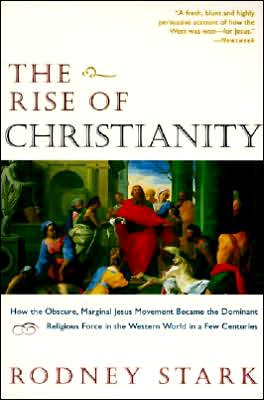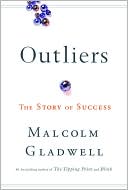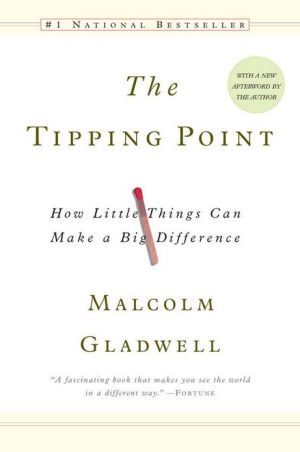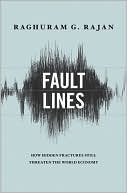Rise of Christianity: How to obscure, Marginal Jesus Movement Became the Dominant Religious Force ....
This "fresh, blunt, and highly persuasive account of how the West was won—for Jesus" (Newsweek) is now available in paperback. Stark's provocative report challenges conventional wisdom and finds that Christianity's astounding dominance of the Western world arose from its offer of a better, more secure way of life.\ "Compelling reading" (Library Journal) that is sure to "generate spirited argument" (Publishers Weekly), this account of Christianity's remarkable growth within the Roman Empire is...
Search in google:
This "fresh, blunt, and highly persuasive account of how the West was won—for Jesus" (Newsweek) is now available in paperback. Stark's provocative report challenges conventional wisdom and finds that Christianity's astounding dominance of the Western world arose from its offer of a better, more secure way of life. "Compelling reading" (Library Journal) that is sure to "generate spirited argument" (Publishers Weekly), this account of Christianity's remarkable growth within the Roman Empire is the subject of much fanfare. "Anyone who has puzzled over Christianity's rise to dominance...must read it." says Yale University's Wayne A. Meeks, for The Rise of Christianity makes a compelling case for startling conclusions. Combining his expertise in social science with historical evidence, and his insight into contemporary religion's appeal, Stark finds that early Christianity attracted the privileged rather than the poor, that most early converts were women or marginalized Jews—and ultimately "that Christianity was a success because it proved those who joined it with a more appealing, more assuring, happier, and perhaps longer life" (Andrew M. Greeley, University of Chicago). Publishers Weekly The rise of Christianity from the death of Jesus to the establishment of the first Christian church is often portrayed as a rapid, almost seamless, movement in history. Sociologist Stark (Theory of Religion) here ponders why Christianity succeeded as it did in the early years of the first century. Stark uses contemporary social-scientific data, about why people join new religious movements and how religions recruit members, to investigate the formative history of Christianity. Among his findings is that the key factors in Christianity's success included the desire on the part of its members to assimilate into the dominant culture, the conversion of pagan men through intermarriage with Christian women and the commitment to voluntary martyrdom. Stark's conclusion that the rapid rise of early Christianity was due mainly to high fertility rates and social policies rather than to faith in the messianic message of Jesus is likely to generate spirited argument. (July)
Chapter One\ \ Conversion and Christian Growth\ \ \ \ Finally, all questions concerning the rise of Christianity are one: How was it done? How did a tiny and obscure messianic movement from the edge of the Roman Empire dislodge classical paganism and become the dominant faith of Western civilization? Although this is the only question, it requires many answers--no one thing led to the triumph of Christianity.\ The chapters that follow will attempt to reconstruct the rise of Christianity in order to explain why it happened. But in this chapter I will pose the question in a more precise way than has been done. First, I shall explore the arithmetic of growth to see more clearly the task that had to be accomplished. What is the minimum rate of growth that would permit the Christian movement to become as large as it must have been in the time that history allows? Did Christianity grow so rapidly that mass conversions must have taken place--as Acts attests and every historian from Eusebius to Ramsay MacMullen has believed? Having established a plausible growth curve for the rise of Christianity, I will review sociological knowledge of the process by which people convert to new religions in order to infer certain requirements concerning social relations between Christians and the surrounding Greco-Roman world. The chapter concludes with a discussion of the legitimate uses of social scientific theories to reconstruct history in the absence of adequate information on what actually occurred.\ Since this book is a work of both history and social science, I have written it for a nonprofessional audience. In this way I can make sure that the social scienceis fully accessible to historians of the early church, meanwhile preventing social scientists from becoming lost amidst obscure historical and textual references.\ Before I proceed, however, it seems appropriate to discuss whether an attempt to explain the rise of Christianity is not somewhat sacrilegious. If, for example, I argue that the rise of Christianity benefited from superior fertility or from an excess of females who made possible high rates of exogamous marriage, am I not, thereby, attributing sacred achievements to profane causes? I think not. Whatever one does or does not believe about the divine, obviously God did not cause the world to become Christian, since that remains to be achieved. Rather, the New Testament recounts human efforts to spread the faith. No sacrilege is entailed in the search to understand human actions in human terms. Moreover, I do not reduce the rise of Christianity to purely "material" or social factors. Doctrine receives its due--an essential factor in the religion's success was what Christians believed.\ \ The Arithmetic of Growth\ \ \ Studies of the rise of Christianity all stress the movement's rapid growth, but rarely are any figures offered. Perhaps this reflects the prevalence among historians of the notion, recently expressed by Pierre Chuvin, that "ancient history remains wholly refractory to quantitative evaluations" (1990:12). Granted, we shall never discover "lost" Roman census data giving authoritative statistics on the religious composition of the empire in various periods. Nevertheless, we must quantify--at least in terms of exploring the arithmetic of the possible--if we are to grasp the magnitude of the phenomenon that is to be explained. For example, in order for Christianity to have achieved success in the time allowed, must it have grown at rates that seem incredible in the light of modern experience? If so, then we may need to formulate new social scientific propositions about conversion. If not, then we have some well-tested propositions to draw upon. What we need is at least two plausible numbers to provide the basis for extrapolating the probable rate of early Christian growth. Having achieved such a rate and used it to project the number of Christians in various years, we can then test these projections against a variety of historical conclusions and estimates.\ For a starting number, Acts 1:14-15 suggests that several months after the Crucifixion there were 120 Christians. Later, in Acts 4:4, a total of 5,000 believers is claimed. And, according to Acts 21:20, by the sixth decade of the first century there were "many thousands of Jews" in Jerusalem who now believed. These are not statistics. Had there been that many converts in Jerusalem, it would have been the first Christian city, since there probably were no more than twenty thousand inhabitants at this time--J. C. Russell (1958) estimated only ten thousand. As Hans Conzelmann noted, these numbers are only "meant to render impressive the marvel that here the Lord himself is at work" (1973:63). Indeed, as Robert M. Grant pointed out, "one must always remember that figures in antiquity . . . were part of rhetorical exercises" (1977:7-8) and were not really meant to be taken literally. Nor is this limited to antiquity. In 1984 a Toronto magazine claimed that there were 10,000 Hare Krishna members in that city. But when Irving Hexham, RaymondF. Currie, and Joan B. Townsend (1985) checked on the matter, they found that the correct total was 80.\ Origen remarked, "Let it be granted that Christians were few in the beginning" (Against Celsus 3.10,1989 ed.), but how many would that have been? It seems wise to be conservative here, and thus I shall assume that there were 1,000 Christians in the year 40. 1 shall qualify this assumption at several later points in the chapter.\ Now for an ending number. As late as the middle of the third century, Origen admitted that Christians made up "just a few" of the population. Yet only six decades later, Christians were so numerous that Constantine found it expedient to embrace the church. This has caused many scholars to think that something really extraordinary, in terms of growth, happened in the latter half of the third century (cf. Gager 1975). This may explain why, of the few numbers that have been offered in the literature, most are for membership in about the year 300.
List of IllustrationsPrefaceCh. 1Conversion and Christian Growth3Ch. 2The Class Basis of Early Christianity29Ch. 3The Mission to the Jews: Why It Probably Succeeded49Ch. 4Epidemics, Networks, and Conversion73Ch. 5The Role of Women in Christian Growth95Ch. 6Christianizing the Urban Empire: A Quantitative Approach129Ch. 7Urban Chaos and Crisis: The Case of Antioch147Ch. 8The Martyrs: Sacrifice as Rational Choice163Ch. 9Opportunity and Organization191Ch. 10A Brief Reflection on Virtue209Notes217Bibliography223Index243
\ Publishers Weekly - Publisher's Weekly\ The rise of Christianity from the death of Jesus to the establishment of the first Christian church is often portrayed as a rapid, almost seamless, movement in history. Sociologist Stark (Theory of Religion) here ponders why Christianity succeeded as it did in the early years of the first century. Stark uses contemporary social-scientific data, about why people join new religious movements and how religions recruit members, to investigate the formative history of Christianity. Among his findings is that the key factors in Christianity's success included the desire on the part of its members to assimilate into the dominant culture, the conversion of pagan men through intermarriage with Christian women and the commitment to voluntary martyrdom. Stark's conclusion that the rapid rise of early Christianity was due mainly to high fertility rates and social policies rather than to faith in the messianic message of Jesus is likely to generate spirited argument. (July)\ \ \ \ \ Library JournalTheories abound regarding the growth of Christianity in its first 500 yearsthat it succeeded most among the urban poor, that women may or may not have had a place, that it bred zealotry. Stark (sociology, Univ. of Washington) considers the theories of many of the classic Christian historians (Harnack, Meeks, and Wilckens, to name a few), subjecting their historical speculations to the rigors of social science as a means of ascertaining both their validity and their value. Through this method, Stark finds Christianity to be a "revitalization movement," a response to social crises. Those crises affected the wealthy as well as the poor, female as well as male, Greek as well as Jew. In Christianity, "doctrine took on actual flesh," and all seekers not only found a place but flourished in the culturally strange (for its time) dynamic of the nonethnic Christian community. Stark provides compelling reading, adding depth and coherence to the often nebulous hyperbole of historical hypotheses. Highly recommended for ancient history and seminary/religion collections.Sandra Collins, SLIS, Univ. of Pittsburgh\ \








